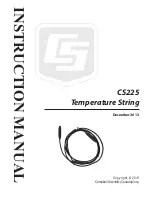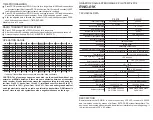
58
Appendix E DC Motor Operation - Background
E.1 How A DC Motor Works
E.1.1 General Principle
A DC motor works by converting electric power into mechanical energy (movement).
This is achieved by forcing current through a coil and producing a magnetic field,
which in turn, spins the motor.
Fig. E.1 DC Motor Operation
To describe the operation of a DC motor, consider the single coil example shown
above. In this diagram, current is forced through the coil via sliding contacts (brushes)
that are connected to the voltage source. The brushes are located on the end of the
coil wires and make a temporary electrical connection with the DC supply. When
current is flowing, a magnetic field is set up as shown.
At 0° rotation, the brushes are in contact with the voltage source and current is
flowing. The current that flows through the wire from A to B interacts with the magnetic
field and produces an upward force. The current that flows from C to D has a similar
effect, but because the flow is in the opposite direction with respect to the magnetic
field, the force is in the downward direction.
A
C
D
B
A
C
D
B
C
D
B
A
A
C
D
B
0 degrees
90 degrees
180 degrees
270 degrees











































